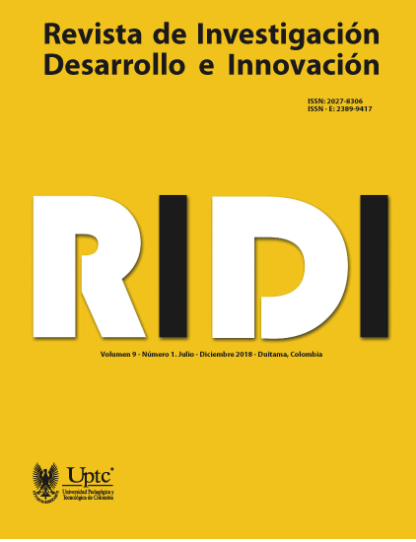Knowledge and practice of design in the training of professionals in non-concurrent areas of design in public universities in Bogotá, Colombia

Abstract
This research article deals with the purpose of configuring a pattern, knowledge and practice of what is understood as design activities from its dimensions: thought, design methodology and aesthetic dimensions, within higher education teaching areas not associated to design professions. This research seeks to identify how teaching processes are understood and executed around the resolution of weakly structures problems in some other areas of knowledge and academic contexts of higher education in public universities in Bogotá, Colombia. Consequently, to achieve this goal, a description, characterization and analysis of the curricular contents that these universities follow in the creation of topics is developed by identifying their origins, bases, methods, and their reason of being in the formation of professionals in sciences, engineering and humanities. As a result, the main finding was to show how in the professional training programs analyzed, the thinking, method and aesthetics of the disciplinary field of design are applied, which allows to establish the levels of influence of this field of knowledge in non-concurrent areas of the design. As a result, the main finding on this study was to show how in the professional training programs analyzed, the thinking, method and aesthetics of the disciplinary field are applied, which allows to establish the levels of influence of this field of knowledge in non-concurrent areas of design.
Keywords
design thinking; design methodology; aesthetic; problem solving; higher education.
Author Biography
Isabel Cristina Agudelo-Torres
Diseñadora Industrial, Magíster en diseño en cerámica y vidrio, Universidad Autónoma de Colombia
Jimmy Leonardo Velasco-Sabogal
Diseñador Industrial, Magíster en pedagogía del diseño.
References
Bonsiepe, G. (1993). Las siete Columnas del Diseño. México D.F., México: UAM Azcapotzalco.
Camacho, T. (2009). Félix Beltrán en el diseño o el diseño en Félix Beltrán. Recuperado de: http://www.artediez.es/articulos/camacho/beltran.pdf
Flusser, V. (2002). Filosofía del diseño. La forma de las cosas. Madrid, España: editorial Síntesis.
Goel, V. (2014). Creative Brains. Designing in a real world. Frontiers in Human Neurscience, 8, 241 1-14. doi: 10.3389/fnhum.2014.00241.
Horta, A. (2007). Epistemología y Diseño. Notas críticas para una aproximación a la ciencia del diseño. Actas de Diseño 2. I Encuentro latinoamericano de Diseño. Diseño en Palermo. Argentina. 1 (2), 135-138.
Horta, A. (2012) Trazos poéticos sobre el diseño. Manizales, Colombia: Editorial Universidad de Caldas.
Hurtado-de Barrera, J. (2010). Metodología de la investigación. Guía para la comprensión holística de la ciencia. Bogotá, Colombia: Editorial Quirón-Sypal.
Moholy-Nagy, L. (1972) Nueva visión. Buenos Aires, Argentina: Ediciones Infinito.
Munari, B. (2004). Como nacen los objetos. México D.F, México: Gustavo Gili.
Read, H. (1961). Arte e Industria. Principios de Diseño Industrial. Primera edición. Buenos Aires, Argentina: Ediciones Infinito
Silva - Cañaveral, S. J. (2016). La investigación-creación en el contexto de la formación doctoral en diseño y creación en Colombia. Revista de Innovacion, Desarrollo e Innovación, 7 (1), 49 - 61. doi: https://doi.org/10.19053/20278306.v7.n1.2016.5601
Zuluaga - Duque, J. F. (2017). Relación entre conocimientos, saberes y valores: un afán por legitimar los saberes más allá de las ciencias. Revista de Investigación, Desarrollo e Innovación, 8 (1), 61 -76. doi: 10.19053/20278306.v8.n1.2017.5973